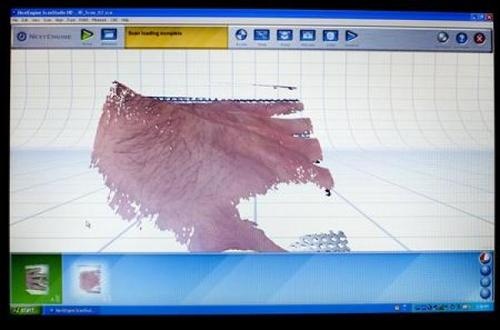Scientists at Wake Forest’s Institute for Regenerative Medicine have developed a novel method for skin grafting that literally prints fresh cells directly onto wounds, promising to radically improve the treatment of burn victims. The scientists say their device was inspired by the common household inkjet printer.

We talked to Dr. Anthony Atala, Director of the Institute, during our This Cyborg Life theme week last fall, and bioprinting came up in passing as a technique his lab was working on. Now they’ve got a rig set up, and initial tests on mice show the process healing wounds in just two weeks, as opposed to five when left untreated.
A laser scans the wound, determining its shape and size, and then the printer precisely sprays two layers of cells onto the injury, first fibroblasts, then keratinocytes. The cells take care of the rest.Dr. Anthony Atala, Director of the Institute, during our This Cyborg Life theme week last fall, and bioprinting came up in passing as a technique his lab was working on. Now they’ve got a rig set up, and initial tests on mice show the process healing wounds in just two weeks, as opposed to five when left untreated.
A laser scans the wound, determining its shape and size, and then the printer precisely sprays two layers of cells onto the injury, first fibroblasts, then keratinocytes. The cells take care of the rest.

The next phase involves testing bioprinting on pigs and, eventually, humans. The Wake Forest researchers hope the technology can be deployed in the Middle East, where serious burns are common and treatment requires intensive, inefficient skin-grafts to prevent infection. Presumably they’ll have worked out the low cellular toner issues by then.
Source: Reuters, Gizmodo.


Pingback: Skin to Be Bioprinted Onto Burn, Accident Victims By New Technology | Techi.com
Pingback: Tecnologia nuova pelle, per 'stampa' sulla carne ferito